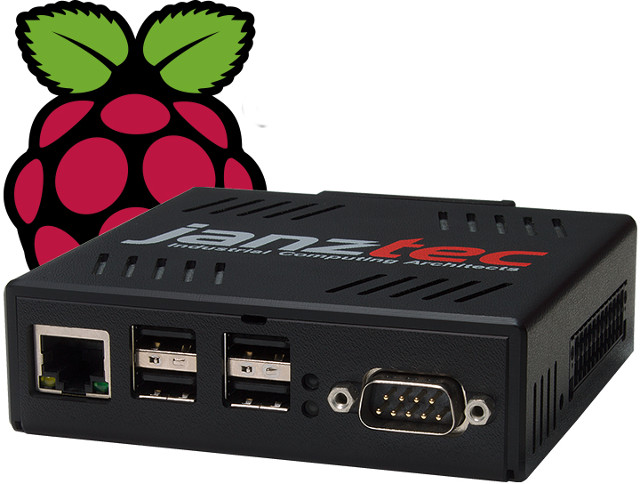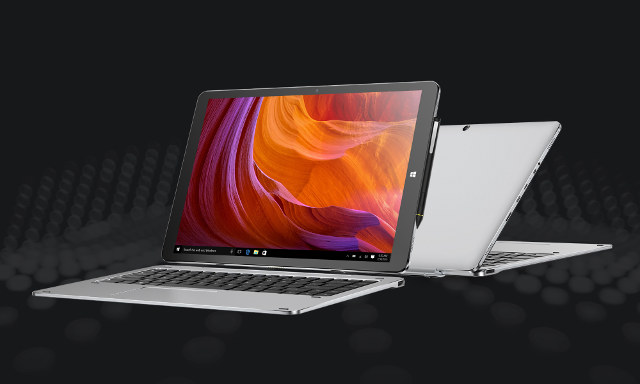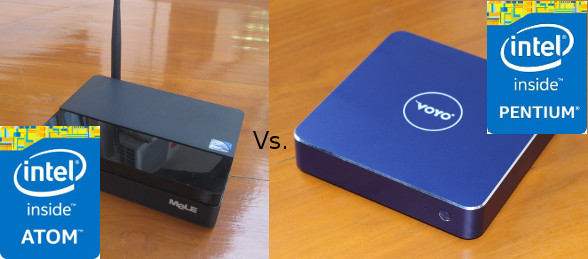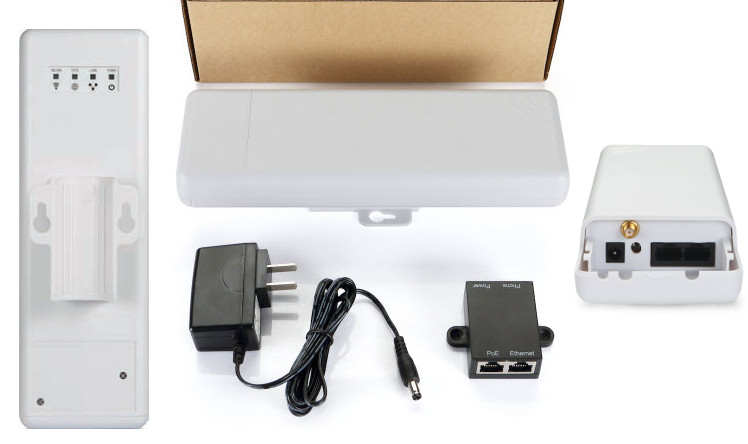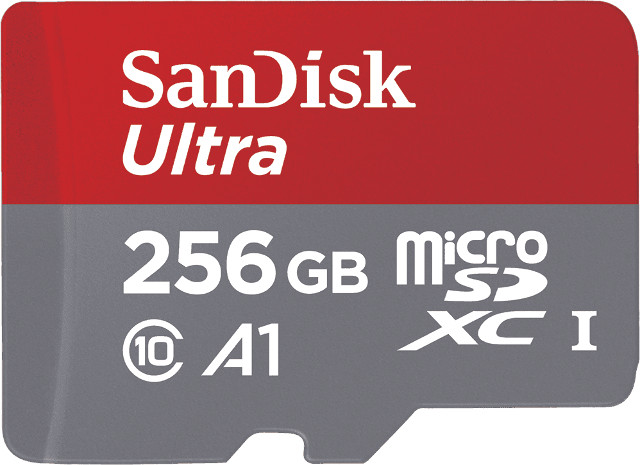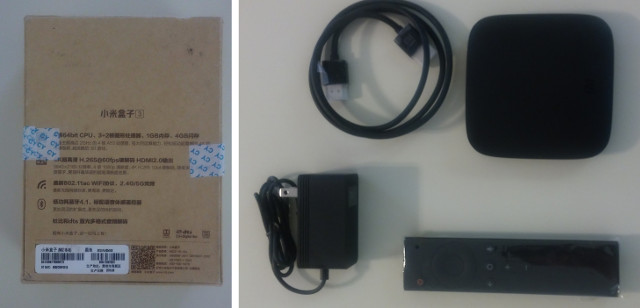We see more and more industrial devices making use of Raspberry Pi boards, after Kunbus RevolutionPi RevPi Core industrial computer based on Raspberry Pi Computer Module, and RailPi 2.0 embedded computer equipped with a Raspberry Pi 3 (or ODROID-C2) board, Janz Tec is now offering another option with emPC-A/RPI3 industrial embedded controller featuring Raspberry Pi 3 board, and supporting variable DC power input, 24V digital inputs and outputs, and interfaces such as CAN, RS485… Janztec emPC-A/RPI3 specifications: SoC – Broadcom BCM2837 quad core ARM Cortex-A53 processor @ 1.2 GHz (but limited to 4x 600 MHz on purpose to avoid overheating) and VideoCore IV GPU System Memory – 1GB DDR2 RAM Storage – externally accessible micro SD slot Video Output – HDMI 1.4 port Connectivity – 10/100M Ethernet port, 802.11 b/g/n WiFi and Bluetooth LE (BCM43143) USB – 4x USB 2.0 ports Debugging – 1x 9-pin D-SUB connector for serial debug […]
GPD Pocket Cherry Trail 7″ Portable Computer Runs Ubuntu 16.04 or Windows 10 (Crowdfunding)
GPD HK launched GPD WIN Windows 10 portable gaming console with a Cherry Trail Atom x7 processor and a 5.5″ display last year on Indiegogo, and while the crowdfunding campaign works very well with over $700,000 raised, the company realized many people just wanted an affordable portable computer, so they removed the joyticks, increased the display size, and upgraded the processor in their GPD Pocket 7″ portable computer powered by an Intel Atom X7-Z8750 SoC and pre-loaded with either Windows 10 Home or Ubuntu 16.04 LTS. GPD Pocket specifications (subject to change): SoC – Intel Atom x7-Z8750 quad core Cherry Trail processor @ 1.6 / 2.56 GHz with a 16EU Intel HD graphics Gen9 System Memory – 8GB LPDDR3-1600 Storage – 128GB eMMC flash Display – 7″ multi-touch display with 1920×1200 resolution, 16:10 aspect ratio; Corning Gorilla Glass 3 Video Output – micro HDMI port for final model (prototype has […]
$369 CHUWI Hi13 2-in-1 Windows 10 Tablet is Equipped with a 3000×2000 Display, Supports Ubuntu / Linux
I’ve recently reviewed CHUWI LapBook 14.1 laptop powered by an Intel Apollo Lake Celeron N3450 quad core processor, and found it to be a perfectly usable entry-level laptop with a few caveats like potential issues with USB ports, and the lack of brightness keys. The company is now about to launch with a higher end model, with the same processor, but instead of a 14.1″ Full HD display it will come with a high resolution 3000×2000 touchscreen 13.5″ display. The tablet will sell with Windows 10, but the company also claims support for Ubuntu, and other Linux distributions will likely work too. CHUWI Hi13 specifications: SoC – Intel Celeron N3450 quad core “Apollo Lake” processor @ 1.1 GHz / 2.2 GHz (Burst frequency) and 12 EU Intel HD graphics 500 @ 200 MHz / 700 MHz (Burst freq.); 6W TDP System Memory – 4GB DDR3L memory Storage – 64 GB […]
Intel Atom Z3735F (Bay Trail) vs Intel Celeron N4200 (Apollo Lake) Benchmarks Comparison
Intel introduced new processors every year, but in most cases the performance improvement from new processor with a similar power profile is only incrementally better, as we’ve seen in our Atom X7-Z8700 vs Pentium N4200 benchmarks comparison, which means it’s not really worthwhile to upgrade performance-wise, unless you really a specific feature or interface found in the new processor. But what if we compare to processor from 2 to 3 years ago? Intel Atom Z3735F was a popular choice two years ago, and if you’re looking for a cheap Intel mini PC or TV box, that’s still the cheapest option with prices under $80. So I’ve decided to compare Intel Atom Z3735F (Bay Trail) processor with 2W TDP to the latest Pentium Celeron N4200 (Apollo Lake) with 6W TDP. To do so, I gathered benchmarks results from MeLE PCG03 mini PC (PCMark 8) and PCG01 TV stick (Passmark + 3Dmark) […]
Dragino OLG01 Outdoor Single Channel LoRa Gateway Runs OpenWrt, Supports Passive PoE
Dragino Technology, a Shenzhen based startup focusing on the Internet of Things, had already designed LoRa shields & Hats for Arduino & Raspberry Pi boards which can be useful for LoRa nodes, but the company has now launched Dragino OLG01 LoRa gateway running OpenWrt that communicates with nodes over LoRa, and to the cloud using WiFi, Ethernet, or 3G/4G. Dragino OLG01 specifications: WiSoC – Atheros AR9331 MIPS processor @ 400MHz System Memory – 64MB RAM Storage – 16MB flash MCU – Atmel ATMega328P AVR MCU with 32KB flash, 2KB SRAM Connectivity 802.11 b/g/n WiFi with antenna 2x 10/100M Ethernet with support for passive PoE Optional 3G/4G module connected to internal USB socket (TBC) Semtech SX1276/78 LoRa wireless module + SMA connector (antenna not provided) up to 5~10 km range USB – 1x USB 2.0 host port Power Supply – 12V DC power jack or PoE Three models are offered with […]
SD Specifications 5.1 to Introduce App Performance Class (for Random I/O) & Logo
SD cards used to store media data only, for example photos and videos in your camera or smartphone, but with the introduction of “Adoptable Storage” in Android 6.0 you can now run apps directly on a micro SD card, and many development boards rely on (micro) SD card to run the full operating system. The difference is important, as with media storage, the raw sequential read and write speeds are the most important, as large files are created and accessed, but for apps and operating systems many small read and write operations such as databases access take place on the card, so random IO performance becomes much more important. So far, the SD card specifications would only report sequential performance with different classes, and for example for are often recommended to use “Class 10” SD cards on Raspberry Pi, which does not clearly indicates the random IO performance. SD Specifications […]
Xiaomi Mi Box (US) Android TV TV Box Review
Introduction The Mi Box is the first Xiaomi product I have used. I received it beginning of December and have been using it regularly since then. I have received 3 updates which went through uneventfully. I was very pleased with this box. I ended up getting one for my in-laws and one for my 4 year old sons bedroom. The UI worked as expected. I have an Nvidia Shield Android TV, and the Mi Box complements it very well. Having Plex Server running on the Shield and Plex on the Mi Box is pretty fantastic to easily share content. Not to mention way more cost effective than putting a Shield in every room. What’s Inside The build quality is good. The power supply puts out 5.2v which is not typical. I do wish it had more USB ports. A single USB is inadequate. I found myself swapping USB out frequently […]
Review & Quick Start Guide for Khadas Vim Pro Development Board with Ubuntu 16.04
Khadas Vim is the only Amlogic S905X development board I’m aware of. There are 4 or 5 versions of the board, but currently only two models are sold: Khadas Vim with 8GB flash and single band WiFi + BLE 4.0, and Khadas VIM Pro with 16GB flash, and dual band WiFi + BLE 4.2. SZWesion, the company behind the board, has sent Khadas Vim Pro for evaluation. Today, I’ll take a few pictures of the board and its accessories, and report my experience playing with Ubuntu 16.04.2 on the board. They’ve also released Android, LibreELEC, and dual boot Android/Ubuntu (for Vim Pro only) images, which you can find in the firmware resources page. Khadas Vim Pro Unboxing and Photos My parcel included Khadas package that looks like a book, an HDMI cable, and the same IR remote control sent with GeekBox, the first board made by the company, and powered […]


